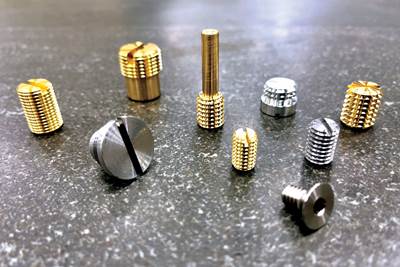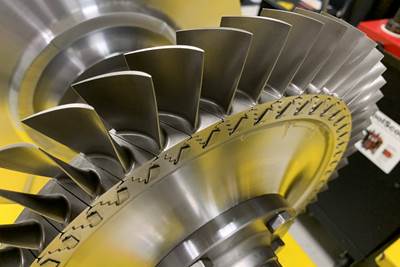Share




When Devin Hamilton (left) and engineering assistant Alex Peña work on-site for contract programming services, a tablet provides a remote connection to Hamilton's CAD workstation at his office. For the duo, this kind of teamwork calls for resourcefulness and ingenuity — the same skills that they apply to solving a customer's CNC programming challenges. All photos and images provided by RapAdapt.
Devin Hamilton is in the invention business. He is the founder and president of RapAdapt, a Webster, New York-based company that focuses on designing and producing things that help people work, play and go about their lives with more independence.
These things include wheelchairs, wheelchair accessories and customized eating utensils, as well as modified tools and devices for the workplace. In addition to helping its customers become more independent, the company offers product development, contract machining, fabrication and programming. Services range from CNC and manual machining to robotic welding to 3D printing and custom molding.
Devin Hamilton has lived with cerebral palsy since childhood, with his persistent focus on enabling technologies key to his success as an engineer and manufacturing entrepreneur. Here, he is checking the smoothness of the surface on a mold contour.
What sets Hamilton and his business team apart from most manufacturing companies is the very personal nature of the inventive drive that energizes it. Hamilton has been living with cerebral palsy since childhood. As a youngster, he learned how to adapt to the demands of daily living and the activities of the family dairy farm that surrounded him. In fact, his natural creativity and mechanical abilities were apparent as he grew up. So Hamilton could help with chores, he and his father were accustomed to modifying agricultural equipment, often by creating novel attachments for a powered wheelchair.
RapAdapt follows this inventive impulse today, developing boldly original ideas for assistive technology and manufacturing challenges, then turning them into physical reality. To perform this process, Hamilton gravitates toward technologies that better enable him to design and program parts. The process of invention — taking ideas for solving problems then finding the means to build devices for real world use — is both an opportunity and a necessity for Hamilton. “My disability gives me a different perspective on how to do things,” he says, specifically pointing to his distinct appreciation for integrated CAD/CAM in his professional pursuits. In particular, he leverages the integration between SolidWorks by Dassault Systemés and CAMWorks by HCL Software to achieve a high level of success.
Integrating Design and Manufacturing
The idea for RapAdapt as a design and manufacturing company originated with Hamilton about seven years ago. After graduating from New York’s Rochester Institute of Technology in 2012 with a degree in mechanical engineering, he worked as a design engineer for a manufacturer of molds for composite parts. There, he saw firsthand how the appropriate technology and the requisite business acumen complemented one another in a successful enterprise. In 2016, Hamilton and Tom Hanna launched RapAdapt. Hanna is currently the company's CFO, while Hamilton serves as company president. Both executives keep the balance of technical expertise and sound business practices in mind. Hamilton’s engineering assistant, Alex Peña, is likewise an indispensable member of this core team.
For Hamilton, the technical side is his chief focus and clearly in line with his personal motivation. “I always wanted to have a company focused on custom adaptive technology,” he says.
RapAdapt now occupies a self-contained facility comprising 2,300 square feet of manufacturing, engineering and office space. Chief manufacturing assets include several CNC machining centers and multitasking machines.
A project completed in 2022 defines the essence of the work that embodies Hamilton’s vision and spurs the company’s product development. Hamilton designed and built a custom wheelchair with powered seat positioning, one of several novel features that set it apart from other commercially available wheelchairs. He and his team machined all the parts, running them in small batches. “The creation of this chair is based on my own experience,” Hamilton explains. The design improves posture and offers additional benefits, including more dynamic seating options, customizable cushioning and less fatigue for someone sitting in a chair for extended periods.
Integrating CAD and CAM
This project also confirmed the value of CAM software specifically tailored for the CAD software of Hamilton’s choice. For example, the design of the custom seating, which is one of the wheelchair’s most inventive features, was developed in SolidWorks. Hamilton favors this CAD software because of what he considers its powerful tools for moving from a rough sketch to a fully formed 3D solid model. But it is the CAM software that enables RapAdapt to program the contours that make the seating comfortable yet properly supportive.
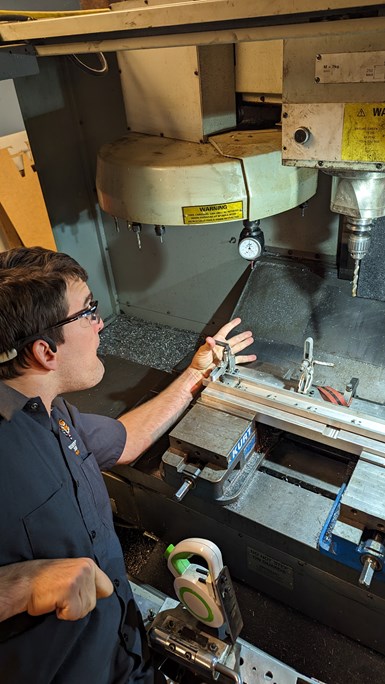
For most machinists, tasks such setting up fixtures are fairly routine and straightforward. For Hamilton, fixturing comes with an extra challenge. He must come up with fixtures that are both effective and accessible given his physical limitations. “Even simple parts sometimes require unusual fixtures just so I can run parts independently. This gives me an edge because it forces me to design features that are easy to operate, even for a guy with cerebral palsy.”
When Hamilton first used SolidWorks as a student at Rochester Institute of Technology, he used an eye-tracking interface to help him sketch and model. He recalls that this interface was especially convenient for him because he found the CAD software had a logical flow and intuitive structure that facilitated his interaction with it. “For a person whose inventive impulses are compelling, this fluidity was a real boon,” he says. Later, when he became a new business owner equipping his own shop, he wanted a high level of design and CNC programming integration because it would be essential to his vision for the new company. He chose CAMWorks because it offered the best integration for the challenges that his company, in his words, “lives for.”
Today, Hamilton says that RapAdapt relies on CAMWorks as an integrated CAM software solution because it enables users to standardize a database of CAD files while maintaining NC programming quality and flexibility for the mill, lathe and router machines currently in his shop. In particular, he cites its associative machining capability that automatically accommodates changes to the part model, which eliminates the need to regenerate tool paths each time a design is updated. “This frees my mind to focus on capturing inventive concepts, rather than on capturing G code,” he says.
Other features of this CAM software that Hamilton finds of importance include:
- Feature Based Machining, the capability to automatically recognize prismatic features on native SolidWorks part models and thereby significantly reduce programming time.
- Knowledge Based Machining, the capability to capture and reuse RapAdapt’s best programming and machining practices when modifying parts for customization. This feature provides a head start in selecting tooling, workholding, workhandling and other setup procedures, in addition to reducing redundant programming when modifying parts for customization.
- Tolerance Based Machining, the capability to link dimensional tolerances to features in 3D models so they are associated automatically when creating CNC programs.
Key proprietary applications Hamilton also cites include:
- CAMWorks Virtual Machine, which enables machine simulation directly from the G-code used for the CNC machine. This feature often makes dry runs unnecessary and makes setup more secure by improving workholding strategies.
- CAMWorks VoluMill, which provides a toolpath engine for rapid material removal while preserving the cutting performance of the tool. RapAdapt relies on this feature often because many of its most innovative parts have complex 3D shapes and body-conforming contours machined from bulky stock pieces.
Hamilton notes that these features and their benefits are amplified in his case because of the exceptional circumstances he faces when interacting with the software. For example, because he relies on an automated tracker that follows and interprets his eye movements much like how a mouse controls the cursor on the PC screen to navigate tabs, select menus and apply chosen macros, the efficient workflow between integrated CAMWorks and SolidWorks enhances his proficiency as a part designer and machine programmer. “Integrated CAD and CAM is both enabling and liberating,” Hamilton says.
Programming in Assembly Mode
One capability derived from the integration of CAMWorks and SolidWorks that Hamilton finds especially useful is creating CNC tool paths in the CAD system's assembly mode rather than in part mode. In assembly mode, SolidWorks links selected component or subassembly files and displays them together on the screen. “This enables me to call up a rendering of a T-slotted machine worktable, a vacuum workholding pad or a vise and then arrange workpiece stock models and fixtures such as toe clamps or vise jaws pulled from a library,” Hamilton explains. At that point, he says, there are many options for how toolpaths in CAMWorks can be generated.
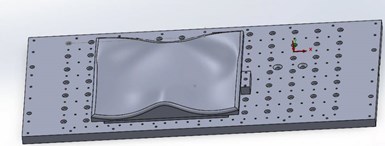
Producing the custom seat cushion that makes RapAdapt’s innovative wheelchair design exceptionally comfortable and supportive is one example of how CAD and CAM integration is essential to the company's vision and mission. Above, the 3D model with contours conforming to a specific customer's anatomy was developed in SolidWorks.
For example, the areas to be avoided so the cutting tool clears the fixtures can be established easily. Likewise, the order in which multiple workpieces are machined or the order in which machining operations can be applied to all or selected workpieces can be set by clicking choices in a dropdown menu box.
“It’s really convenient for me to plan a job for the machining center this way because I have both the flexibility and the visibility to optimize a setup using a minimum of tab selections and keystrokes,” he says. An added benefit is that the setup can be shared with his assistants or customers. No guesswork is involved on the shop floor.
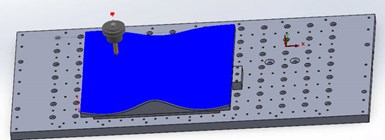
Here, the tool path developed in CAMWorks for the surfacing operation can be simulated. Updating this tool path when programmers modify the cushion's contours is virtually automatic.
Hamilton points out that workpieces can also be programmed in part mode, that is, a file of a 3D solid designed in SolidWorks can be opened in CAMWorks for toolpath generation. “This method is relatively easy and straight forward, so I like it for simple, single pieces that need to be programmed quickly. The CNC program does stay associated with the part when added to a SolidWorks assembly, too,” he adds. However, programming in assembly mode is his preferred method when designing complex new products because he can manage imaginative concepts while keeping an eye on manufacturability.
Integration Makes a Difference
Examples of the benefits of integration bear this out. RapAdapt offers contract programming to clients that have CNC machines but may not have the available staffing to perform needed programming. Hamilton and Peña team up to find the best solutions for their customers. “We go in and set up programs for them,” Hamilton says, “We test the programming ourselves and make sure that it works and will be fine for anyone to run it.”

Applying CNC programming routines while in the CAD system's assembly mode enables Hamilton to work out the details for effective workholding and safe tool paths at the same time. Here, two sides of a vacuum adapter part have been programmed for a multi-step setup.
When taking on a new programming project, Hamilton and Peña work together. Hamilton brings a mobile computer to customer visits to communicate remotely to computers back at RapAdapt. In his office, Hamilton uses a desktop with multiple screens, an eye tracker and specialized equipment to help maximize his efficiency with CAD/CAM software. While working at customer sites, however, he does not have easy access to this efficiency-boosting technology.
At the direction of Hamilton, Peña can quickly design and program parts and fixtures without having to travel back to the RapAdapt shop. Using CAMWorks’ toolpath visualization tools, the team then confirms that the program is correct and moves on to setting up customer machines. “I keep it moving, and then Devin will teach me while we’re doing the job,” said Peña. “He’s like my hands,” added Hamilton. “It’s teamwork-driven.”
Also, the CAD/CAM software helps when it comes to design and communicating with customers. CAD simulation capabilities allow thumbnail sketches to evolve into custom, finished parts. “Even if it is a sketch on a cocktail napkin, we can make it. With CAMWorks, I can export a detailed machine simulation and send it to the client for approval,” Hamilton says.
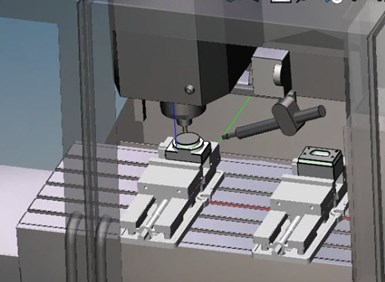
Simulation of milling operations for the upper and lower faces of the vacuum adapter verifies that production processes are efficient and safe. An integrated CAD/CAM environment suits Hamilton's passion for bringing inventive concepts into reality.
An Integrated Life
For Hamilton, discussing the integration of CAD and CAM is representative of his approach to life in general. He offers the example of opening a jar. For most people, this task requires no special thinking. Hamilton, however, must determine how to hold the jar and get enough torque on the lid to open it. “This type of problem-solving is so routine that it is almost instinctive to me. My mind simply leaps to it and I have it figured out. Every moment can become an adventure as much as a challenge.”
He adds that this knack for problem-solving translates to machining work, such as finding original and effective workholding, coding techniques or discerning the most effective cutting processes for optimal metal material removal. Likewise, he takes this same approach to managing his “invention business” as both a production operation, and as a resource to customers with special needs.
He sees this constant mix of challenges and adventures as a source of energy and excitement. “It’s what I do. It’s how I live.”
Related Content
Can AI Replace Programmers? Writers Face a Similar Question
The answer is the same in both cases. Artificial intelligence performs sophisticated tasks, but falls short of delivering on the fullness of what the work entails.
Read MoreERP Provides Smooth Pathway to Data Security
With the CMMC data security standards looming, machine shops serving the defense industry can turn to ERP to keep business moving.
Read MoreThe Power of Practical Demonstrations and Projects
Practical work has served Bridgerland Technical College both in preparing its current students for manufacturing jobs and in appealing to new generations of potential machinists.
Read MoreOrthopedic Event Discusses Manufacturing Strategies
At the seminar, representatives from multiple companies discussed strategies for making orthopedic devices accurately and efficiently.
Read MoreRead Next
How to Start a Swiss Machining Department From Scratch
When Shamrock Precision needed to cut production time of its bread-and-butter parts in half, it turned to a new type of machine tool and a new CAD/CAM system. Here’s how the company succeeded despite the newness of it all.
Read MoreIntegrated CAD/CAM Promotes Process Efficiency, Traceability
High-requirement markets are not only searching for good parts — they're searching for proof of good parts. CAD/CAM software can help.
Read MoreBringing Machining In-House to Keep up With Demand for Offroading Parts
To meet demand increases for its Ford offroad industry components, supplier RPG Offroad brought its machining processes in-house, saving the company nearly $50,000 per month. Here’s how its choice of integrated CAD/CAM software made it happen.
Read More














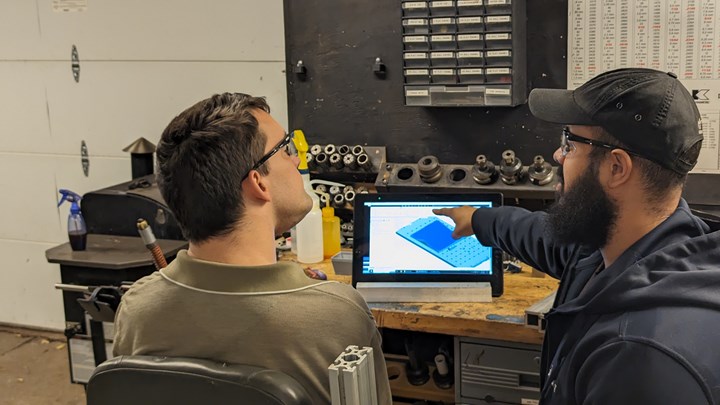



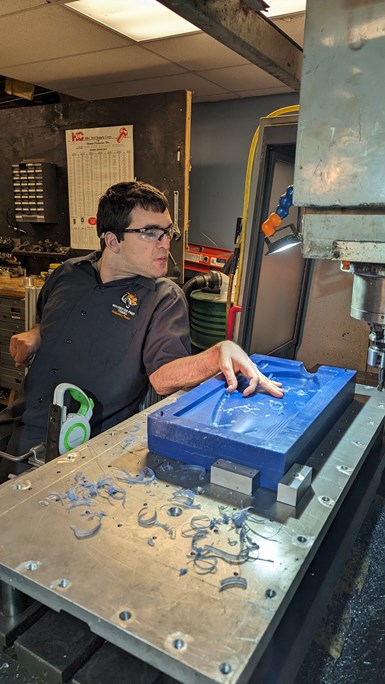


.jpg;maxWidth=300;quality=90)









